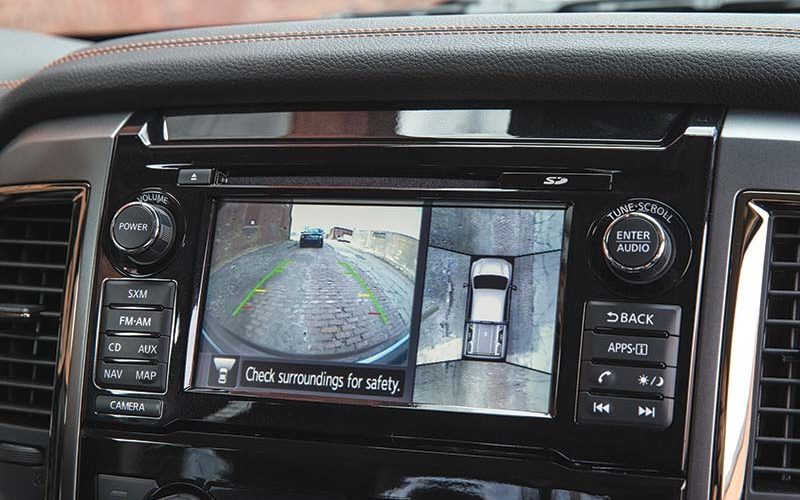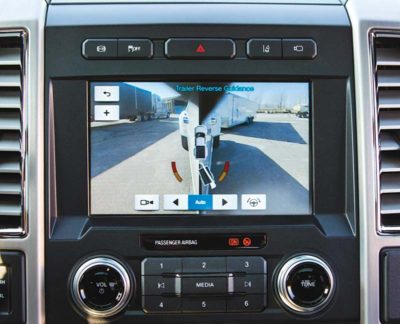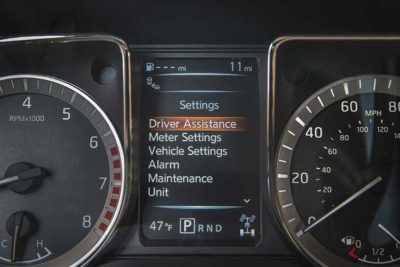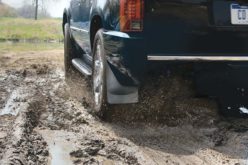The Digitization of Trucks

The cameras are what most consumers notice first. Up to seven of them on many new pickup trucks. These broadcast every movement of the truck from nose to side views, plus reversing manoeuvres as they happen in real time, right to the large centre screen. Frankly, given the size of pickups today, that help is much appreciated.
The days of “judging distance” are fading fast as these multi-camera systems are taking the guesswork out of parking and reversing. In fact, helping drivers is what so much of the new tech in these trucks is all about; these video helpers are just the obvious features of what’s currently a driver-assist technology revolution.
Ford’s new Super Duty, for instance, uses three cameras just for the trailer reverse guidance. On the centre screen, these create a bird’s-eye diagram of the truck as well as a split image of the left and right side of the trailer. The truck will even warn the driver if the trailer is about to jackknife. In addition, an auxiliary camera can be mounted at the rear of the trailer, and its image is also broadcast on the centre screen via the seven-pin electrical connector. In essence, with these video inputs, it is possible to back up a trailer without looking at the mirrors at all – an option that will seem ridiculous to any trailering veteran. Yet, not only can it be done, it’s actually safer than the old-school methods we have been using for decades. Simply put, you can see far more with cameras than you can with mirrors.

If you’re sensing a theme, it’s because there is one. I’ve been driving trucks for over 40 years (and reporting on them) and I’ve watched as the industry over the past twenty years dedicated itself to building bigger and better trucks. However, the emphasis was on powertrains, passenger space/luxury and cargo capacity. Yet, with ever-larger trucks and greater loads, the driver’s skills had to also increase. I believe they did, but the anxiety and stress that came with it was undeniable. Now, the manufacturers are finally focused on helping drivers get the most out of these trucks, safely. Multiple cameras, adaptive cruise control, Wifi and never-before achieved weight limits – these are the headlines, but also lurking in the wiring are a multitude of subtle systems that, combined, are making the driver’s life easier.

Ford and GM, for instance, both offer adaptive steering systems that change up steering input at low speeds, which makes backing manoeuvres easier. Digital steering also holds the truck to the crown of the road at high speed, fighting cross-winds and lousy pavement. Add to that Lane-Keep assist, and you have a second set of eyes keeping your rig on the right side of the road.
And speaking of night-time, there has always been some guesswork and faith in knowing when to re-enter your lane after passing a slower vehicle with a trailer. Ford now has a system called BLIS to help with this. It’s a blind spot alert system, not unlike what most manufacturers have, but BLIS has a programmable setting where you can enter the length of your trailer. It now indicates when your truck and trailer have cleared the passed vehicle. A seemingly small feature, Hi-beam assist, again, is a comfort on long night runs.

Its camera system also includes Moving Object Detection (MOD), which detects moving objects behind the truck when backing; it gives the driver an on-screen notification and a warning chime.
So, while these current driver-assist electronics are nothing short of miraculous in their scope, there is more to come. A quick look at the heavy truck industry gives a hint as to what’s next. Volvo Trucks of Europe has just developed a safety system that utilizes cameras and radar technology to monitor the road and activate an automatic emergency braking system in case the driver is too slow or doesn’t react – and that’s in a full-size tractor-trailer.













